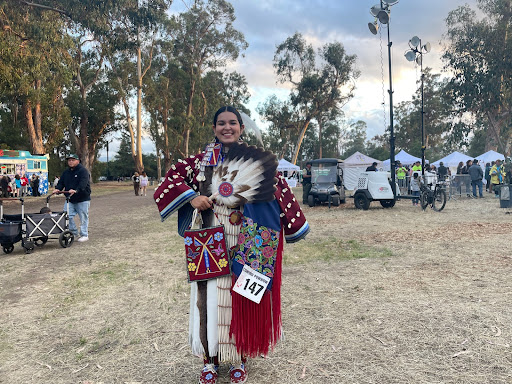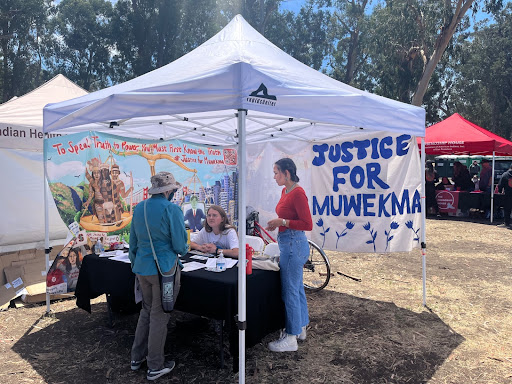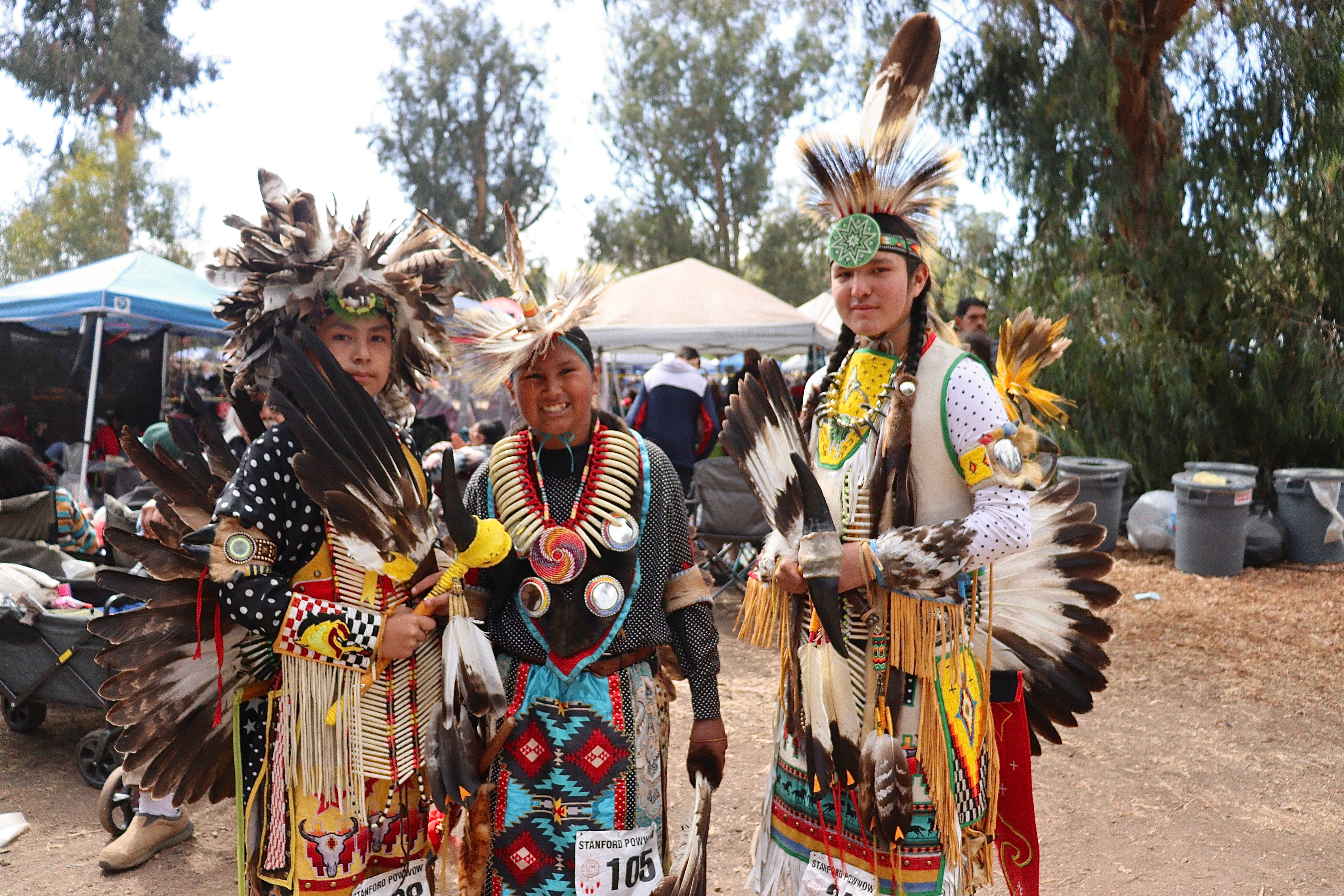As Neela Samayoa walked into Stanford’s Eucalyptus Grove, the air filled with the thumping sounds of traditional powwow drumming. After traveling from South Dakota to Palo Alto, a journey of more than 1,500 miles, Samayoa still could not help but feel at home — she knew her community was finally starting to come together again. As a dancer and a member of the Oglala Lakota Tribe, Samayoa wore her northern traditional regalia for her Teen Girls Traditional dance contest.
The nervousness that Samayoa felt ahead of the dance contest could not dilute her joy — after two years of virtual Powwows, Samayoa, her loved ones and indigenous students from around the country gathered at Stanford for the 51st Annual Stanford Powwow.
“It is just such a better feeling to hear the drum and perform in person,” she said. “It is a feeling that you can’t get over.”

Neela Samayoa, a high school sophomore from South Dakota who competed in the Teen Girls Traditional dance contest at the 51st Annual Stanford Powwow (Photo: ENKHJIN MUNKHBAYAR/The Stanford Daily)
The theme of this year’s Stanford Powwow, held from May 6 to 8, was “Intergenerational Resilience.” Over the weekend, thousands of attendees from hundreds of tribes congregated to celebrate the Native American and Indigenous culture and the values that have been passed down through generations.
In 1970, a mere 25 Native American students enrolled at Stanford, joining the 14 who had enrolled in 1968. The first Stanford Powwow was held in 1971 to offset the negative image of the University’s Indian mascot at the time and to bring diverse Native American presence to campus.
51 years later, Stanford is now home to more than 450 Indigenous- and Native-identifying students and hosts the largest student-run powwow in the nation.
Nevertheless, work remains to be done for the Native community on campus, the University and the Muwekma Ohlone Tribe, whose ancestral lands include the Stanford campus, according to Alyssa LaTray ’23.
Among the information booths present at the Powwow were the Muwekma Ohlone Tribe and Justice for Muwekma, a new student group at Stanford.
Together, the Muwekma Ohlone Tribe and Justice for Muwekma are working to inform the public about the California Senate Joint Resolution 13 (SJR 13), a piece of legislation that seeks federal recognition of the Muwekma Ohlone Tribe. This status would grant the Muwekma Ohlone certain rights and services from the US government including healthcare services, educational grants and reclamation of ancestral remains.

As a member of a formerly non-federally recognized Little Shell Chippewa Tribe and descendant of the Blackfeet Tribe, LaTray was eager to volunteer to table for the Justice for Muwekma at the Powwow, she said. LaTray understands first-hand the impact a federal recognition can have.
“Prior to a federal recognition of my tribe, a lot of my people had no access to healthcare,” LaTray said.“ Now we have government funding that is really helpful for mental health and health care resources. We are even building a gym with the help of the funding.”
The government’s reluctance to offer recognition to the Muwekma Ohlone Tribe that they have built on is “absurd,” LaTray added.
Isabel Dean ’25, who is a member of Chickasaw Nation and Choctaw Nation, echoed the importance of a federal recognition of the Muwekma Ohlone Tribe. She said that she appreciates the work that the Justice for Muwekma group does on campus.
“We hope the attendees get a chance to recognize that they are in the beautiful Muwekma Ohlone tribal area,” said Monica V. Arellano, the vice chairwoman of the Muwekma Ohlone Tribe of the San Francisco Bay Area. Arellano addednshe was excited about the first-ever dance performance of the Muwekma Ohlone Tribe at the Stanford Powwow.
Despite the small Native population on campus, surrounding herself with people with stories and experiences similar to her own at this year’s Powwow was a “welcoming change” for Dean. She said she felt an “overwhelming sense of belonging and pride” in her culture.
Some students have expressed frustration with other programming happening on campus during the Powwow, preventing non-Native students from attending.
According to Snehal Naik, the senior director of the Office of Student Engagement, the transition to in-person celebrations has been busy, and student groups work together to schedule events throughout the quarter. “Our vision is to help student organizers hold many and varied events throughout the quarter to provide a diversity of social life choices for students,” he wrote to The Daily.
The reach of the Powwow is not limited to Indigenous populations — the multi-day event is open to the general public, giving Indigenous community members an “opportunity to showcase our culture on campus,” she said. “Anyone can come and be a part of the experience and learn about the culture in a way that is presented by Native people.”
Along with longstanding Powwow-goers, this year was the first time at the event for many attendees, including David Madej ’22.
Madej encouraged people who have never been to the Powwow to see it as an opportunity to get to know the Native community better. “Not a lot of people get to interact with Native American culture in a meaningful way,” he said. “I am grateful to have this exposure.” He described the Stanford Powwow as a “truly unique experience,” and encouraged Stanford students to experience it in future years.
